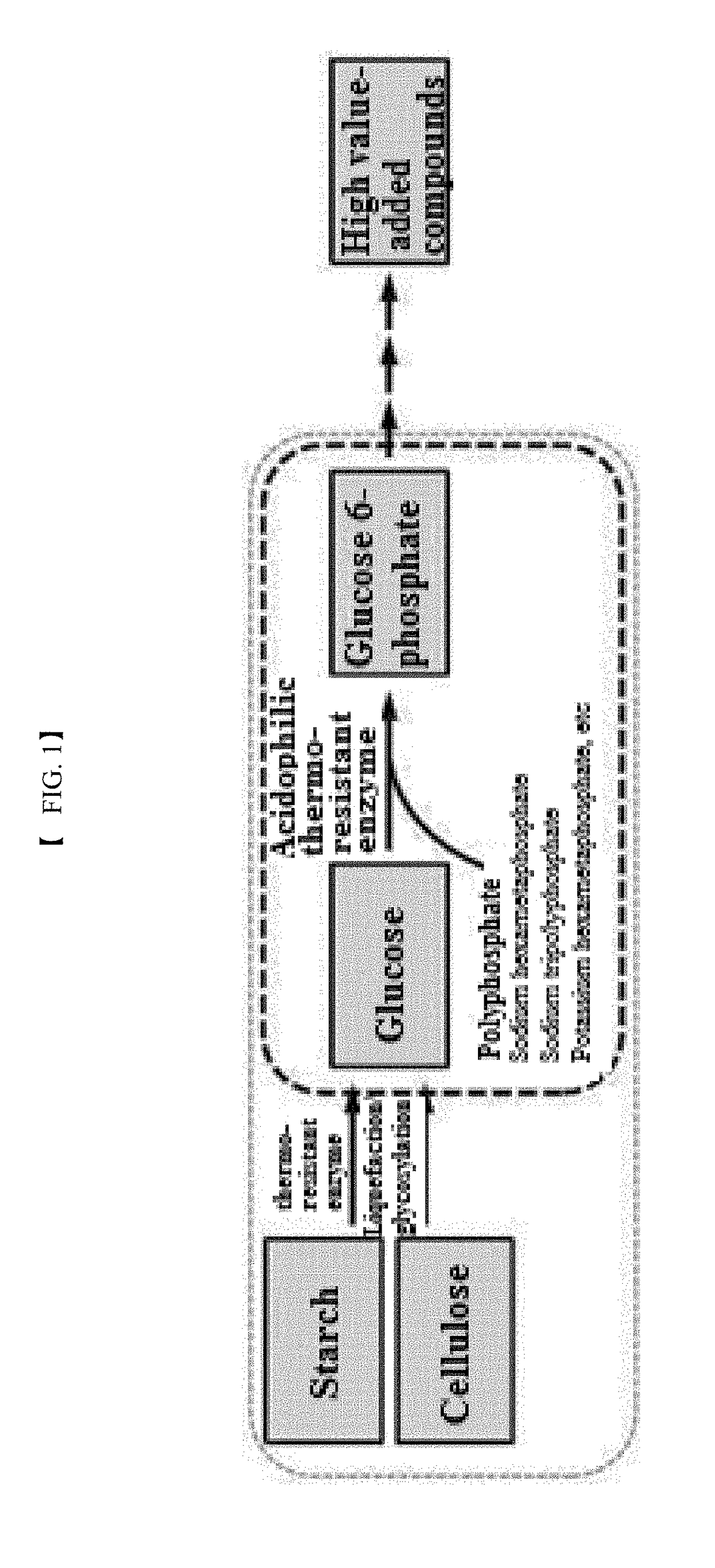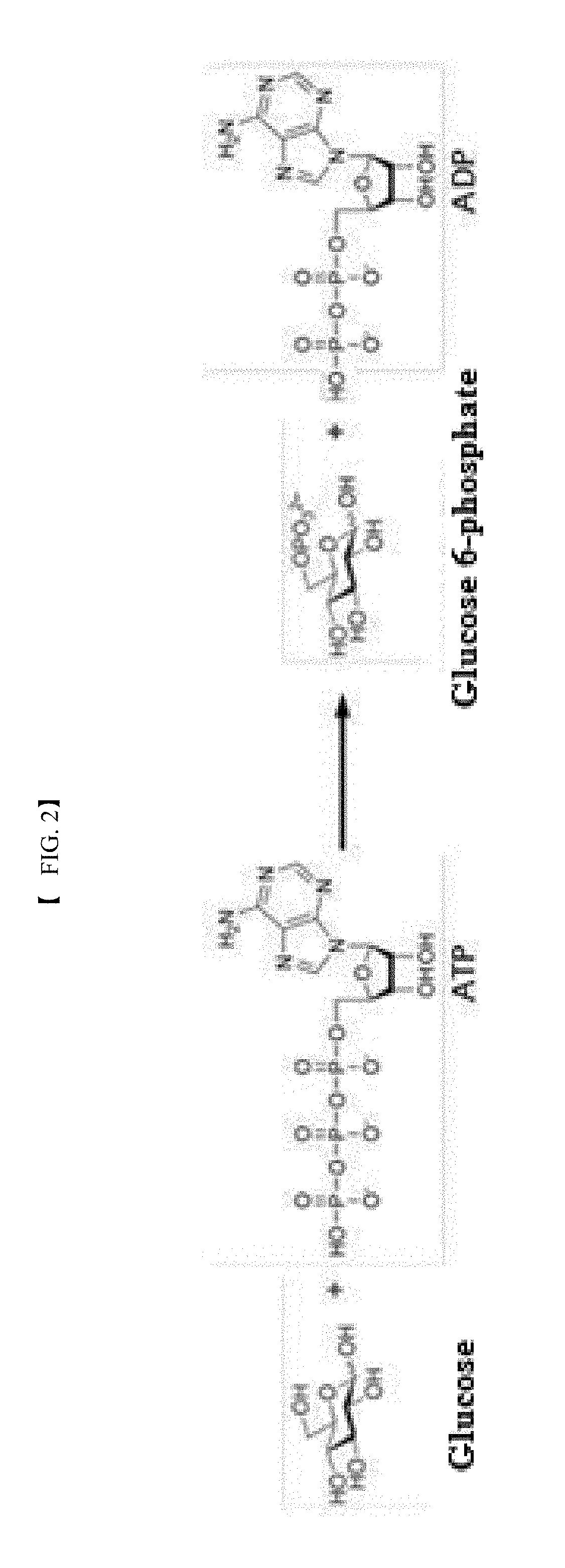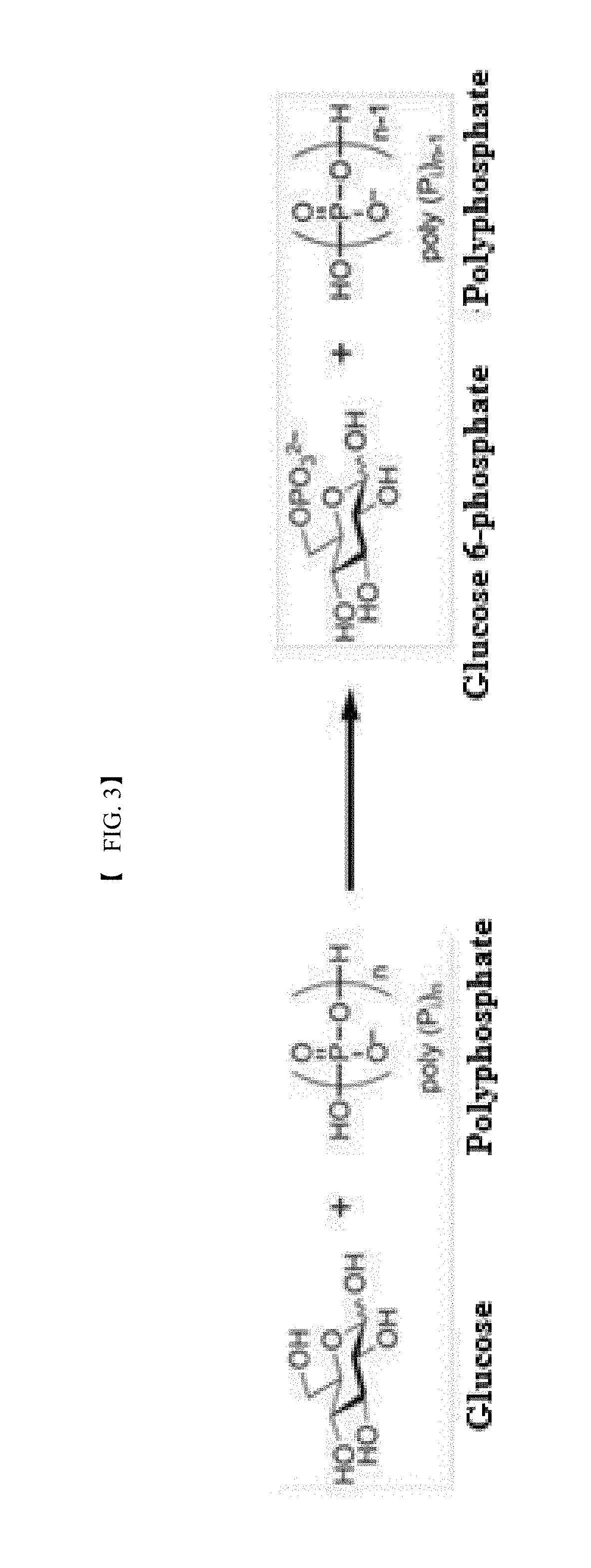Novel polyphosphate-dependent glucokinase and method for preparing glucose 6-phosphate by using same
a glucokinase and polyphosphate technology, applied in the field of new polyphosphate-dependent glucokinase, can solve the problems of limited practical use, inability to achieve economic efficiency and stability, etc., and achieve the effects of reducing reaction time, increasing solubility of d-glucose, and increasing diffusion rate of materials and reaction ra
- Summary
- Abstract
- Description
- Claims
- Application Information
AI Technical Summary
Benefits of technology
Problems solved by technology
Method used
Image
Examples
example 1
n of Recombinant Expression Vector Including Polyphosphate-Dependent Glucokinase Gene and Transformed Microorganism
[0069]To provide a novel high-temperature active thermoresistant polyphosphate-dependent glucokinase, a polyphosphate-dependent glucokinase gene derived from thermophilic Anaerolinea thermophila was isolated, a recombinant expression vector was constructed, and a transformed microorganism was produced.
[0070]Specifically, gene sequences associated with the enzyme of the present invention were screened from the gene sequences registered in GenBank and only the gene sequence derived from the thermophilic microorganism was selected therefrom. Based on the registered gene sequence (SEQ ID NO. 1) and the amino acid sequence (SEQ ID NO. 2) of Anaerolinea thermophila, a forward primer (SEQ ID NO. 3) and a reverse primer (SEQ ID NO. 4) were designed. The corresponding gene was amplified from Anaerolinea thermophila genomic DNA by polymerase chain reaction (PCR) using the synthes...
example 2
n of Recombinant Polyphosphate-Dependent Glucokinase
[0071]In this example, a recombinant polyphosphate-dependent glucokinase was produced. First, a culture tube containing 5 ml of LB liquid medium was inoculated with E. coli BL21(DE3) / CJ_at_ppgk. The inoculum was cultured in a shaking incubator at 37° C. until an absorbance of 2.0 at 600 nm was reached. The culture broth was added to LB liquid medium in a culture flask, followed by main culture. When the absorbance of the culture at 600 nm reached 2.0, 1 mM IPTG was added to induce the expression and production of a recombinant enzyme. The culture temperature was maintained at 37° C. with stirring at 200 rpm. The culture broth was centrifuged at 8,000×g and 4° C. for 20 min to collect bacterial cells. The collected bacterial cells were washed twice with 50 mM Tris-HCl buffer (pH 7.0) and suspended in the same buffer. Then, cells were disrupted using an ultrasonic homogenizer. The cell lysate was centrifuged at 13,000×g and 4° C. for...
example 3
of Activity of the Recombinant Polyphosphate-Dependent Glucokinase
[0073]In this example, the activity of the recombinant polyphosphate-dependent glucokinase was analyzed. To this end, glucose (4% (w / v)), sodium hexametaphosphate (3% (w / v)), and MgCl2 (1 mM) were suspended in 50 mM Tris-HCl buffer (pH 7.0) to prepare a reaction composition for analysis of activity. The purified enzyme (0.1 mg / ml) was added to the reaction composition. The reaction was allowed to proceed at 60° C. for 15 min. The reaction product was analyzed by HPLC under the following conditions: Aminex HPX-87C (Bio-rad) column, 80° C., 5 mM H2SO4 solution as mobile phase, and flow rate of 0.6 ml / min. Glucose 6-phosphate was detected and analyzed using a Refractive Index Detector.
[0074]The results of analysis revealed the production of glucose 6-phosphate from the reaction product of the purified recombinant enzyme.
PUM
| Property | Measurement | Unit |
|---|---|---|
| pH | aaaaa | aaaaa |
| temperature | aaaaa | aaaaa |
| temperature | aaaaa | aaaaa |
Abstract
Description
Claims
Application Information
 Login to View More
Login to View More - R&D
- Intellectual Property
- Life Sciences
- Materials
- Tech Scout
- Unparalleled Data Quality
- Higher Quality Content
- 60% Fewer Hallucinations
Browse by: Latest US Patents, China's latest patents, Technical Efficacy Thesaurus, Application Domain, Technology Topic, Popular Technical Reports.
© 2025 PatSnap. All rights reserved.Legal|Privacy policy|Modern Slavery Act Transparency Statement|Sitemap|About US| Contact US: help@patsnap.com



